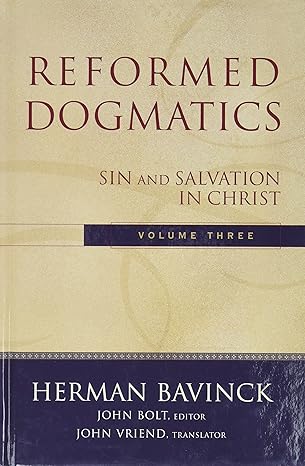A Brief Book Summary from Books At a Glance
by Steve West
Table of Contents
Part I – The Fallen World
1 The Origin of Sin
2 The Spread of Sin
3 The Nature of Sin
4 The Punishment of Sin
Part II – Christ the Redeemer
5 The Covenant of Grace
6 The Person of Christ
Part III – The Work of Christ
7 Christ’s Humiliation
8 Christ’s Exaltation
Part IV – Salvation in Christ
9 The Order of Salvation
Summary
*Editor’s Note: This book is divided into two book summaries. The first summarizes Parts I-II, and the second summarizes III-IV.
Part III: The Work of Christ
All over the world people feel a sense of sin, alienation, and misery, and they also feel a need for redemption and reconciliation. Human desires can only be met and satisfied by religion; culture cannot satisfy our longing for eternity, and human communities cannot bring about the redemption we hope for. There is a global understanding in all religions that sacrifice is required, and this phenomenon requires explanation. After the fall, sacrifice was needed for the removal of sin. Sin was covered by the shedding of sacrificial blood and by sacrifice, there was expiation. The Old Testament sacrifices—which were numerous and varied—all pointed forward to, and were fulfilled by, the Suffering Servant Jesus Christ. In every religion, special priestly mediators offer sacrifices on behalf of others.
Christ is the fulfillment of the law and the sacrificial system; it was not through the blood of bulls and goats that sin was removed. In fact, through the continual repetition of offerings and sacrifices, the people were reminded of their sin and the need for an ultimate, efficacious sacrifice. Through Christ’s sacrifice, he secures all of the covenant blessings of salvation, removing our sin, providing forgiveness, covering our sin in atonement, and reconciling us to God. The New Testament speaks of his atonement in a rich variety of ways, using different terms and metaphors to represent his multifaceted work. It also identifies many of these innumerable blessings by name and shows how there are layers upon layers of them.
Although there is some diversity in understanding the work of Christ in salvation, the types of controversies that exist regarding the doctrines of the Trinity or Christology are not found in church history on the questions of soteriology. There were a few different models for the atonement that were taught (e.g., ransom to Satan), but atonement theology was not divisive. With Anselm, the satisfaction theory gained prominence: his key proposal was that it was only through the God-man that satisfaction could be made, and that Christ’s death delivered sinners from sin itself and sin’s guilt. Christ’s atonement removes and cancels everything negative against us and confers upon us positive benefits. Scripture contains a number of diverse perspectives on the work of Christ, such as his death on the cross is a satisfaction, a ransom, a healing, a substitutionary sacrifice, and more. His atonement is often considered under the rubric of his work as prophet, priest, and king. . . .
[To continue reading this summary, please see below....]The remainder of this article is premium content. Become a member to continue reading.
Already have an account? Sign In
